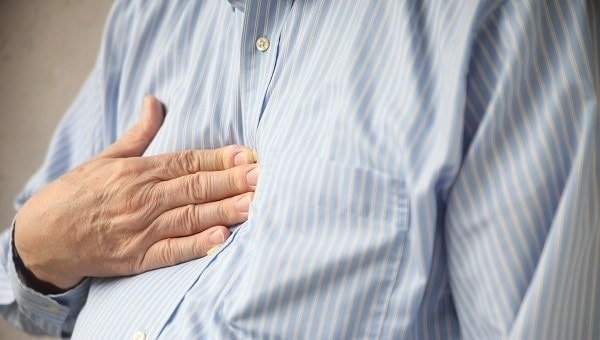Bile reflux

Bile reflux occurs when bile, a digestive fluid produced in the liver, leaks into the stomach and esophagus.
The disease may be accompanied by acid reflux – a medical term used to denote the condition of stomach acids entering the esophagus.
Whether bile contributes to acid reflux is controversial.
Bile is often thought to be the cause of acid reflux when affected people do not respond fully or at all to powerful stomach acid-suppressing drugs.
But there is little scientific evidence to accurately determine the effects of bile reflux in humans.
Studies in laboratory animals show that over time, bile fluid entering the stomach and esophagus can have serious consequences, such as potentially increasing the risk of esophageal cancer.
Unlike acid reflux, bile reflux is usually not affected by dietary or lifestyle changes. But instead, it is necessary to apply drug therapy, and in very severe cases, surgery.
What are the symptoms of bile reflux?
Bile reflux can be difficult to distinguish from acid reflux. The clinical manifestations are similar, and both medical conditions can occur at the same time.
It is not clear how much it contributes to reflux conditions.
The most characteristic manifestations of bile reflux are:
• Abdominal pain in the upper abdomen, which can be very severe;
• Frequent heartburn – a burning sensation behind the sternum, which sometimes reaches the throat, together with a sour taste in the mouth;
• Nausea;
• Vomiting of greenish-yellow liquid /bile/;
• Causeless weight loss;
• Sometimes coughing or hoarseness;
When to seek medical help?
Consult your GP if you frequently feel reflux symptoms or lose some weight for no reason.
If you have been diagnosed with GERD but are not getting adequate relief from your prescribed medication, consult your GP.
Additional medications may need to be prescribed to control bile reflux.
What are the causes?
Bile is a greenish-yellow fluid that is essential for breaking down fats and removing red blood cell debris and some toxins from the body.
Bile is synthesized in the liver and stored in the gallbladder.
Consumption of food that contains even a small amount of liquid signals the gallbladder to release bile, which drains through two small tubes that connect into the common bile duct.
Through them, the bile fluid enters the upper part of the small intestine /duodenum/.
At the same time as bile enters the duodenum, food enters the small intestine through the pyloric sphincter from the stomach.
The pyloric valve opens only slightly about 3.5 mm. and to allow enough time for the liquefied food to enter. But the pyloric sphincter does not allow the reflux of digestive juices into the stomach.
Treatment of Bile Reflux
Although bile reflux is not affected by lifestyle changes, many sufferers experience relief from their symptoms, so you can do the following:
• Stop smoking – smoking increases the amount of stomach acid and reduces salivation, which keeps the lining of the esophagus moist;
• Eat more often but reduce the portion size you eat, this will reduce the pressure on the lower esophageal sphincter, which prevents it from opening at the wrong time.



